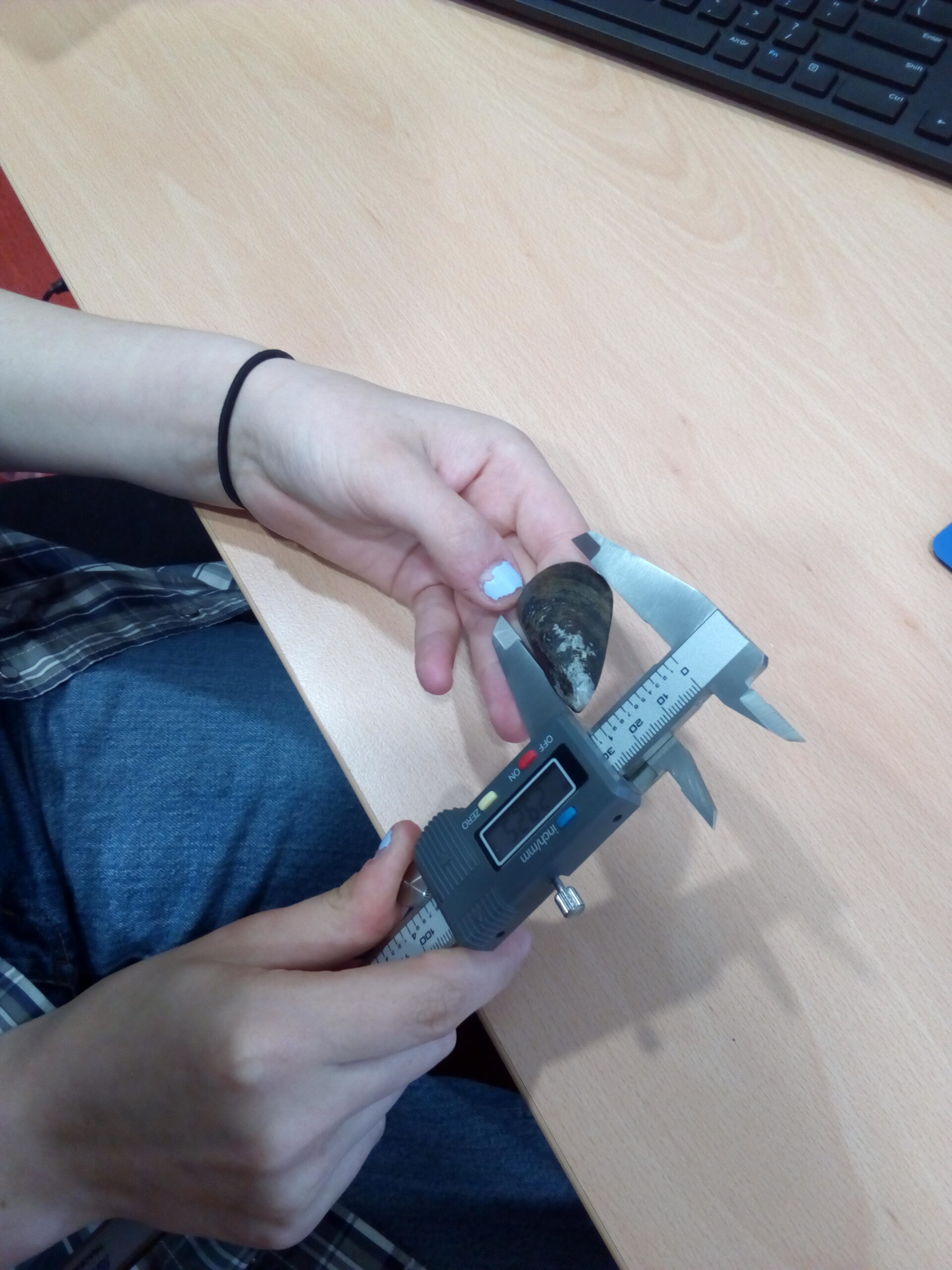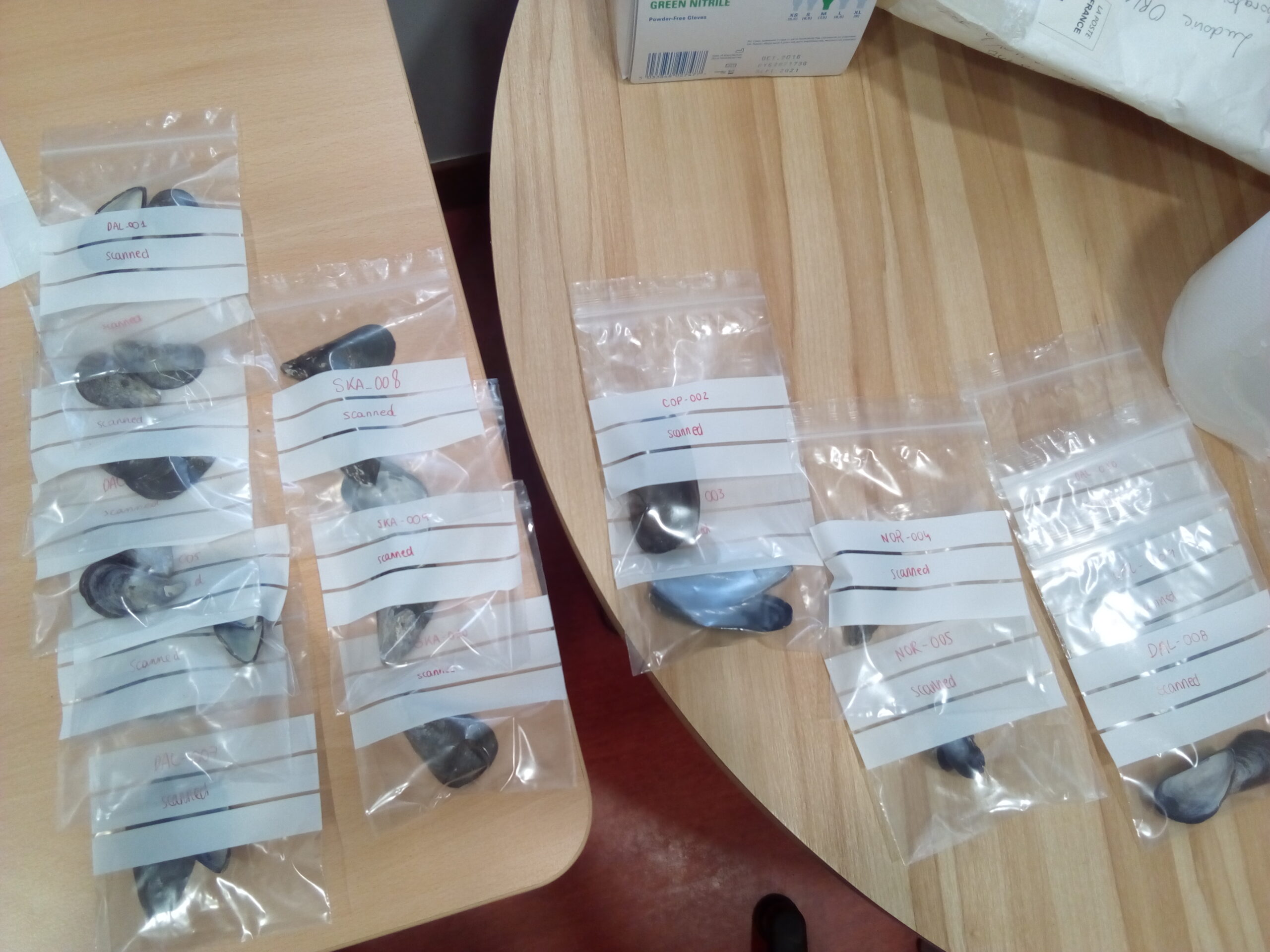We are happy to host Fanny ORLANDO, a 10th grade student, for a one-week internship at CAGT.
Her mission is to evaluate methods for measuring mussel shell dimensions: a manual method using a caliper and a digital method using the software Avizo. She applied these two approaches on modern specimens from five Baltic sites in Denmark. Relying on an accurate method will be critical in the course of the MEET morphological analyses when investigating the relationships between shapes and sizes in mussel shells. This is why Fanny’s results will be helpful for the technical implementation of the project.
Manual method: Fanny will measure the height, length and width of each of the left and right shell valves with a calliper. This will be done in triplicates so as to estimate intra-operator variability.
Digital method: Fanny will use the Avizo built-in function to estimate height, length and width from 3D models of the same mussel shells. These 3D models were reconstructed from micro-CT scans at a maximum resolution of 58 microns.
Both approaches have their avantages. The digital method might be more accurate and reproductible, but it relies on the acquisition and pre-processing of 3D-models, a long and expensive process. The manual method, on the other hand, is cheaper, more direct and portable as calipers can be brought to the field or to museums.
We wish Fanny a good luck for her first scientific project !





